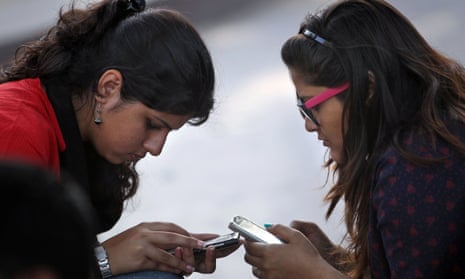Strict parenting and social disapproval are among factors that make teenage girls in developing countries significantly less likely than boys to own a mobile phone, researchers have found.
Limited access to mobile technology also means girls are sharing phones in secret, leaving them more vulnerable to the harmful effects of social media because of their relative inexperience online, according to a survey by Girl Effect and the Vodafone Foundation.
More than half of the girls interviewed by Girl Effect, a non-profit aimed at empowering adolescent girls, said they had borrowed devices from friends, brothers or parents.
Kecia Bertermann, technology director at Girl Effect, said: “This study reveals the reality for girls and their position at the back of the queue when it comes to accessing mobile. We found that girls experience more of the risks but fewer, if any of the benefits; without the time or permission to develop the confidence to explore more sophisticated uses of mobile, girls’ tech literacy is hampered.”
The researchers trained teenage ambassadors to interview 1,400 15- to 19-year-olds in Nigeria, Tanzania, Malawi, Rwanda, India and Bangladesh. Though smartphones are commonplace across each of the six countries, it was found that girls face disproportionate barriers to accessing technology, diminishing their digital literacy.
Bertermann said that girls who resorted to secretive phone use felt unable to tell parents or friends about safety issues arising from their use of social media. The study identified male harassment as their foremost concern.
The researchers found marked differences in the way boys and girls used mobile technology. In Nigeria and Malawi, for instance, boys tended to use phones for a more sophisticated range of activities, from spending time on social media and searching the internet for news to finding jobs. Girls in these locations were more likely to be restricted to simple tasks like calling their parents or using the calculator.
In India and Bangladesh, girls with mobile phones face stigma within their communities. Those breaking rules imposed on their usage reported punishments including severe beatings, being kept out of school or even early marriage.
In Malawi and Rwanda, where access to mobile is restricted and tech literacy among girls is low, girls expressed fears that a phone might lead to unwanted pregnancy by making it easier to contact boys. However, an overwhelmingly majority also felt that a phone could help to keep them safe.
Girl Effect, which is aiming to improve digital literacy and online safety among girls, said the results would help them to provide targeted services to the estimated 7 million girls using borrowed phones.
